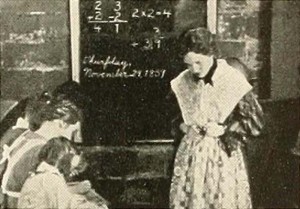
"The Birth of St. Mary's, by Robert F. Gowen. is a deeply moving and well nigh incredible accomplishment in amateur film production. Described as a chronicle in retrospect by the church that it pictures, the film moves bravely into the treacherous domain of costume drama and emerges triumphant. To recreate the gracious life of another day, to catch the feeling of its clothes and the flavor of its customs, to stage all of this against settings not only dramatically sound but full of beauty as well — such were but part of the problems of the producer. Perhaps greatest of all was the task of carrying on each step of this work with the willing, but often wilting, help of an entire community, the accomplishment, through infinite patience, of holding this group together for an entire year. Mr. Gowen has done it all superbly well. To this triumph of teamwork he has added sensitive direction, finished acting by his players and genuinely first rank color photography of largely interior setting. A double turntable musical score, carefully selected for historical accuracy, accompanies the production. The Birth of St. Mary's is a loving and lovely testimony, destined to increase steadily in stature as it becomes itself a part of the past." Movie Makers, Dec. 1937, 602-603.
"Black Book and Camera has good old George, you know George, photographing all the pretty lassies at the World's Fair. He then asks for their names and addresses so that he can send them a photo. Wouldn't a black book full of names and addresses be worth a pretty penny? W-e-l-l. . . George gets a lot of pretty pictures, but as for those names and addresses. . ." PSA Journal, Aug. 1967, 37.
"Film is about what happens when a two-minute power failure causes a blackout. Cameras caught before and after scenes in four houses, titled 'Daughter's Date,' 'The Ladder,' 'Cat and Dog,' and 'Women.' " Archives of Ontario.
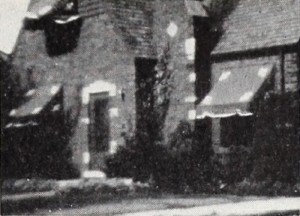
"A brief film designed as a trailer for home use rarely possesses the quality of general audience appeal. Grace Lindner may be justly proud of having achieved this elusive element in Bless This House. The film is a hymn of love, an ode in praise of home, the family, mutual understanding and other ingredients of the good life. That the theme is an emotional one is admitted. That it might have become painfully saccharine is granted. That it did not is due to the sensitive and restrained manner in which the filmer has presented her familiar scenes. Fred Waring's recording of the title song furnished the theme and is used as an integral part of the film." Movie Makers, Dec. 1950, 466.
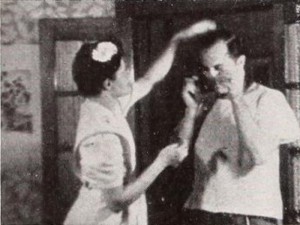
"Werner Henze has shown in Bohemian Baloney that artists can make fun of themselves and their profession. An artist and his wife had planned to have a quiet evening at the movies when a telephone call warns of a visit by a wealthy prospective buyer of pictures and her meek husband. How the young couple suddenly transform their own characters and their tasteful and immaculate living room into a scene of "arty" surroundings is gaily depicted with just the right amount of farce. The compositions and lighting are excellent and there are gay, unexpected twists throughout, particularly when a self portrait of the artist comes to life." Movie Makers, Dec. 1944, 495.
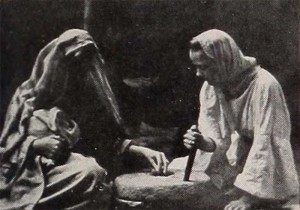
"In the best tradition of filming technique, a movie should be an independent story telling medium. It should not require explanation or demonstration to make its meaning clear. Yet, there is no reason why this cardinal principle should not be violated, if the variation from accepted technique serves an artistic purpose. The Book of Ruth, by G. Manley DeBevoise, involves a new departure from tradition, for the film itself is an illustration in motion of the Biblical story, rather than a complete dramatization of the story. The tale is told by a narrator in synchronism with the appearance of the scenes on the screen, and, without the narration, the movie would be incomprehensible. Yet the two form a perfect unit which resents a fuller interpretation of the story of Ruth than would be possible by any other means. Costuming and selection of properties for this film are excellent and accurate. A church group worked for months in research to avoid anachronisms. The result is a splendid religious teaching film. The narration is given in person, and music is carefully scored by double turntable." Movie Makers, Dec. 1939, 636.
"Scenes of various arrangements and exhibits at Bramhall flower show in 1934. Interior shots of the exhibition marquees, show table displays being judged by show ground officials. The film also includes footage of the flower shows at Southport and Mottram in 1932. Various livestock classes are judged in the competition ring. The winners of each section are seen standing with their owners in front of the camera." (NWFA Online Database)
"This fascinating film from the early 1930s is all the more remarkable because it was made by a woman filmmaker, Enid Briggs. First we meet the Mullett family in Hythe before seeing early footage of the Romney. Hythe and Dymchurch Railway. Then we see family and friends on the pier at Deal, on a steamer to Margate and at play on the sands at Joss Bay. This is followed by horse-riding scenes around Broadstairs, on quiet streets still unaffected by cars. We also get a glimpse of a coastal tram" (BFI Player online).
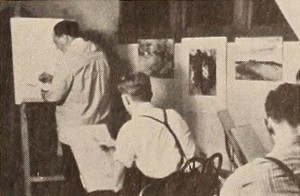
"Builders of Tomorrow, produced by the Cinema Laboratory of Western Reserve University and filmed by Dr. James E. Bliss, takes one into the Cleveland School of Architecture at Western Reserve and shows the embryonic architects at work. The students are pictured studying the principles of design, drafting and in art classes. Architectural models are expertly filmed and with lighting and treatment that, in several cases, make them indistinguishable from actual structures and streets. The entire picture is interior color and the lighting is ably handled throughout." Movie Makers, Dec. 1938, 621.
"Family members look on as mill men build an archway in the garden at Greenbank, Keswick. General outdoor scenes with flowerbeds and a swing." (NWFA Online Database)
Total Pages: 29